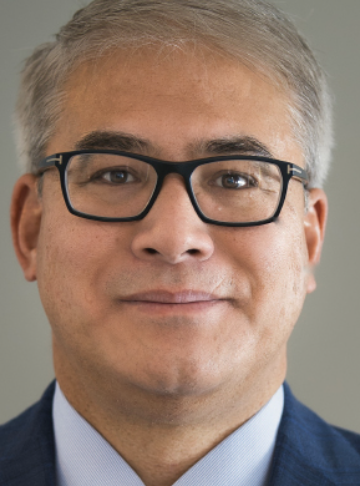| By Richard Mark Kirkner, Editor |
 |
| With Peter K. Kaiser, MD |
 |
APX3330 is an investigative oral treatment for diabetic eye disease that has demonstrated the potential to reduce proinflammatory and hypoxic signaling that contributes to diabetic retinopathy. Recently reported results from the ZETA-1 Phase IIb trial didn’t meet the primary study endpoint, which was a more than two-step improvement in the Diabetic Retinopathy Severity Scale score; 8 percent of patients in both the treatment and placebo groups met the endpoint (p=0.93). However, the trial demonstrated a systemic and ocular safety profile.1
The Phase IIb trial, however, did meet what the trial sponsor and investigators say is an important secondary endpoint of preventing clinical meaningful progression of diabetic retinopathy after 24 weeks.
Here, Peter K. Kaiser, MD, professor at the Cole Eye Institute of the Cleveland Clinic, and a paid consultant and investigator for Ocuphire, follows up on his recent presentation of results from the Phase IIb trial.1
Q: How would you describe the mechanism of action of APX3330?
A: APX3330 is a Ref-1, or reduction-oxidation effector factor-1, inhibitor. Ref-1 is upstream of cis-1 alpha, which is upstream of vascular endothelial growth factor. In diabetes, Ref-1 is elevated, which increases cis-1 and VEGF, and we know what VEGF does.
Q: What can you tell us about the design of the Zeta-1 Phase IIb trial?
A: It evaluated the 600-mg daily dose of APX3330 compared with placebo. Patients had nonprolifertive DR or moderate to severe proliferative DR. The primary outcome of a two-step improvement in DRSS is the same primary outcome for pivotal trials of ranibizumab and aflibercept.
Q: What was the key secondary outcome?
A: The secondary outcomes were things that people don’t think about that often with trials in diabetic eye disease, but because APX3330 is a pill that affects both eyes, we evaluated both eyes and reported binocular results. That meant a three-step improvement or worsening of DRSS in both eyes.
However, because APX3330 has been evaluated in so many other previous studies in other diseases, a dose-escalation study wasn’t needed. We already knew the 600-mg dose was more than adequate and safe.
Q: What else did the trial reveal about APX3330?
A: Interestingly, in the fellow eye there was a very a large trend of 27 percent vs. 5 percent for placebo that met the primary endpoint, but this wasn’t statistically significant (p=0.2).
Q: What about improvement or worsening of DRSS?
A: In the APX3330 group, no patients had the ≥3-step worsening in DRSS at 24 weeks in both eyes compared to 16 percent in the placebo group (p=0.04). There was also a trend in the opposite direction: 11 percent of APX3330 patients had a ≥3-step improvement vs. 6 percent (p=0.38).
Q: What’s next in the development of APX3330?
A: Because of the Phase II results, the primary outcome for the Phase III trial would be prevention of three-step worsening DRSS. So the next step is to get sign-off on the Phase III registration study.
Peter K. Kaiser, MD, is a professor at the Cole Eye Institute of the Cleveland Clinic. Dr. Kaiser is a paid consultant and investigator for Ocuphire Pharma.
REFERENCE
1, Kaiser PK. Efficacy and safety data for APX3330, a novel oral drug candidate for DR/DME from the ZETA-1 Phase 2b trial. Paper presented at Angiogenesis, Exudation and Degeneration Meeting Virtual; February 11, 2023.



